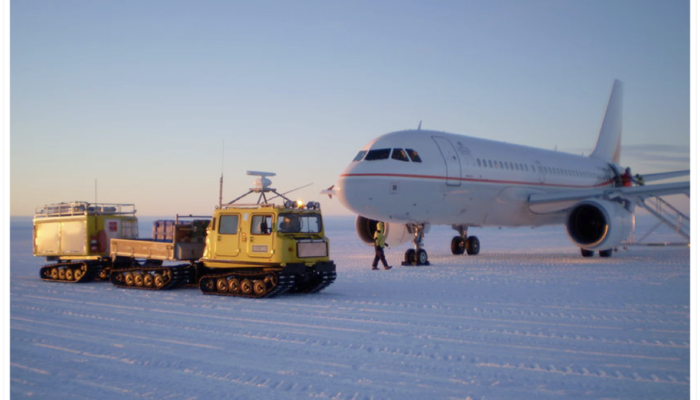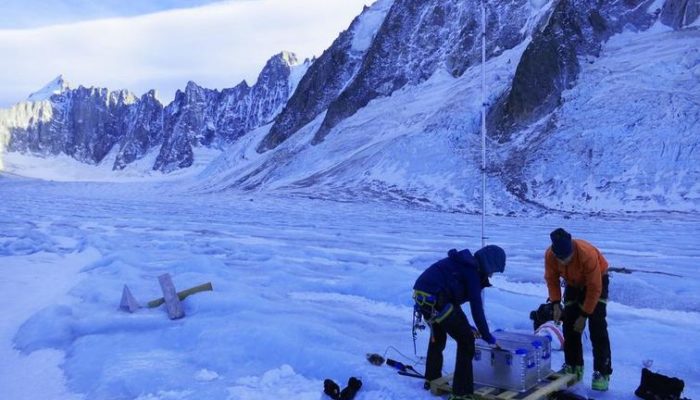Do you know what the periglacial environment is? Well, the word periglacial refers to those environments which are somehow sculpted by seasonal freeze and thaw cycles. The alternation of freezing and thawing conditions can change the landscape, creating some spectacular landforms. Stone circles are certainly among the most mysterious and fascinating. Come and discover them! Some definitions Glacia ...[Read More]
If you didn't find what you was looking for try searching again.
Cryospheric Sciences
phase-sensitive Radio Echo Sounder, a.k.a. pRES, For Dummies
Greetings! My name is Reza. I’m (still) A PhD candidate in Geophysics and Glaciology at the University of Tübingen in Germany. Today, I will tell you all about a device named pRES, a radar system designed to study ice. Well, pRES and I have had an immense love/hate relationship during the last four years. It is one of the main tools I have used during my PhD, working in the Alps and Antarctica. I ...[Read More]
Cryospheric Sciences
Why the 2022 Italian snow drought matters to you
June 2022: I was discussing the ongoing drought with my family over lunch, when my dad pointed to me and summarized things as follows: “You know, less snow in winter means less water in summer!” I almost choked … what? Not only was it the first time I realized my family had been listening to my scientific anecdotes for years, but I also had concrete evidence now that snow was entering public ...[Read More]
Cryospheric Sciences
A new glacier chronology from New Zealand
In this week’s blog, Levan Tielidze tells us about the new glacier history from the Southern Alps of New Zealand, an important piece of information to better understand the climatic history of Earth during the Quaternary, the current geologic period. Quaternary glaciations Geochronological dating of glacial moraines is useful for determining the extent and timing of past glaciation and for reconst ...[Read More]
Cryospheric Sciences
Lights out: cryosphere instruments perfectly placed to study solar eclipse
On 04 December 2021, only a handful of people in Antarctica were fortunate enough to experience a total eclipse. As well as spectacular views—including a brief window of totality that darkened the midnight sun for 2 minutes—this phenomenon is known to affect the flow of energy between the Northern and Southern hemispheres of the ionosphere. Because eclipses in Antarctica only happen once every ~20 ...[Read More]
Cryospheric Sciences
Summer 2022: A perfect storm for Alpine glaciers
The summer of 2022 is shaping up to be a perfect storm for Alpine glaciers. By a strange coincidence, all the factors that could adversely affect glacial dynamics seem to have come into agreement. Let’s find out why. What controls the behavior of Alpine glaciers? Snow, temperature, weather conditions and the properties of snow and ice. These are the most important factors governing the life ...[Read More]
Cryospheric Sciences
The Cryosphere meets the Twittersphere
Twitter is a place that can be full of an overwhelming amount of information, and often it becomes difficult to hear about new information amongst the noise of all the tweeting. To help our fellow cryo-enthusiasts learn more about equality, diversity and accessibility within the cryosphere, we’re highlighting a few twitter accounts that we think everyone should follow! Gender equality: @womeninPol ...[Read More]
Cryospheric Sciences
What are Snow Mechanics and why should we care?
Every time we walk, ski, drive or build upon snow, we’re relying upon the theory of Snow Mechanics; but what is that and why should we care? Mechanics is the engineering terminology used to describe “the branch of applied mathematics dealing with motion and forces producing motion” (Oxford Languages) or more simply, the study of motion, in our case the motion of snow. What causes snow to move? Ge ...[Read More]
Cryospheric Sciences
Did you know… that glaciers can sing?
Have you ever wondered what the voice of a glacier sounds like? Well, listen here! And if you want to know how the glacier makes these sounds, then let’s take a walk on the ice side… Close your eyes and think of the time you were in the middle of the mountains. On a snow plain, a glacier or a frozen lake; just you. You hear your footsteps in the snow, crunching ice. The wind blows through your hoo ...[Read More]
Cryospheric Sciences
Meet Carleen Tijm-Reijmer, our fearless CR Division President!
Every division within the European Geosciences Union is led by a senior and junior representative, who oversee the happenings within their respective divisions. The senior representative of the Cryosphere Division is Carleen Tijm-Reijmer, who we’ve managed to track down here at EGU! We ask Carleen to explain her role within EGU and the CR Division. Please tell us a little bit about yourself! ...[Read More]










